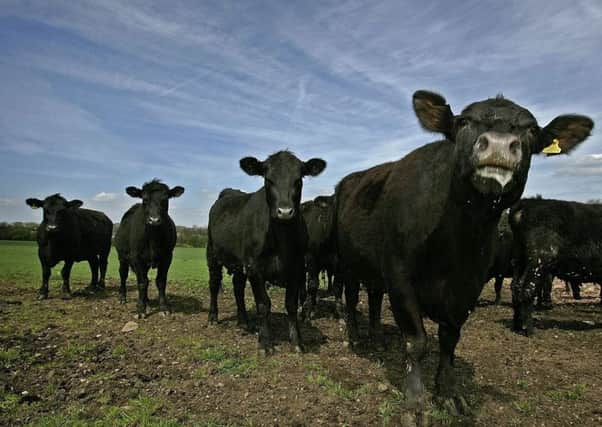Polarised views on beleaguered beef efficiency scheme
This article contains affiliate links. We may earn a small commission on items purchased through this article, but that does not affect our editorial judgement.


With politics put to one side for the general election, the focus of the day was on encouraging efficiency and innovation in the industry.
However, opinion of the Scottish Government’s beleaguered beef efficiency scheme – which was designed to just such ends – remained split at the event, and ranged from “an incredibly useful tool” to “damaged goods”.
• READ MORE: Farming news
Advertisement
Hide AdAdvertisement
Hide Ad

The £45 million scheme launched last year, while attracting over half of the national herd, has struggled to attract the same proportion of producers – and figures revealed last week showed that 300 of the 2,000 who had signed had recently withdrawn from the initiative following dissatisfaction with its lack of understanding of farming practicalities and questions over where the funding was being targeted.
Speaking at the event, cabinet secretary Fergus Ewing, while admitting that there had been some difficulties with the new scheme, said that he hoped recent changes which had been initiated following discussions with NFU Scotland and other stakeholders would address some of the practical shortfalls which had plagued the scheme.
• READ MORE: Farmers right to have a beef with efficiency scheme
Jim McLaren, chairman of Quality Meat Scotland (QMS) – and chair of the Beef 2020 which had proposed such a scheme – encouraged producers to stick with it despite the well-documented frustrations, stating that the benefits to producers would begin to roll out after the first tranche of information was available.


And there was a stout defence of the initiative at the main seminar, with the Irish Farmers Journal beef editor, Adam Woods, stating that there had been a similar “communications disaster” as far as selling the scheme to farmers was concerned when the scheme had been launched in Ireland.
“But now there is a widespread recognition that genomic evaluation provides a massively useful tool which greatly improves the accuracy of breeding figures,” he said.
And Nuffield scholar Robert Fleming said that beef producers in Canada happily paid $25-50 for genomics test, in the US they paid $50-150 while in Brazil they had to fork out up to $250 for such a test.
Advertisement
Hide AdAdvertisement
Hide Ad“And here we are – complaining when we’re getting paid to do the tests,” he said.
Fleming said that the genomic details could provide all the details which could help with improving eating quality, calving ease, maternal traits and improving days to market.
He said: “And all these powerful tools will be available after the data which we’re currently providing is analysed and becomes available.”
However other industry stalwarts attending the event expressed a different view. And while the event’s host, Douglas Stewart, declined to comment on the day, he had previously dismissed the scheme, describing it as “too fluffy” and unattractive – and hadn’t joined up as he already carried out the majority of things required under the scheme without the bureaucratic hassle.
And well-known Perthshire hill farmer, and chairman of the Moredun Foundation, Ian Duncan Millar eschewed the scheme for the same reasons – and, when asked if a similar scheme might work in the sheep sector, he said that in the industry’s eyes the scheme was now “damaged goods” and a copy-cat plan was unlikely to be taken up by producers.
Former NFU Scotland vice-president Bob Howat said that while he was sticking with the scheme, its lack of understanding of the practicalities of day to day farming were the cause of considerable frustration within the sector.
• A warning to the farming industry not to end up subsidising food production from other income streams was also made during the day’s main seminar by Dunbar farmer John Hamilton.
Advertisement
Hide AdAdvertisement
Hide AdAsked, as part of the panel, where he thought the industry would be in ten years time, he said that while the current polarisation towards ever bigger farms and smaller, part-time units was likely to continue, food production should stand on its own two feet.
“The part-time trend is already well developed in Ireland but we shouldn’t have to use money from other sources to prop up food production,” he said, adding that diversification enterprises should be viewed in the same light.
He said that while the whole supply trade was “living off farmer’s backs”, any reduction in support payments to the industry would be felt far and wide in the rural sector.
Woods said that the creation of buyers groups in his home country had helped producers shave considerable margins off some of their costs, with huge discounts often possible when a business-minded approach was taken by such groups.